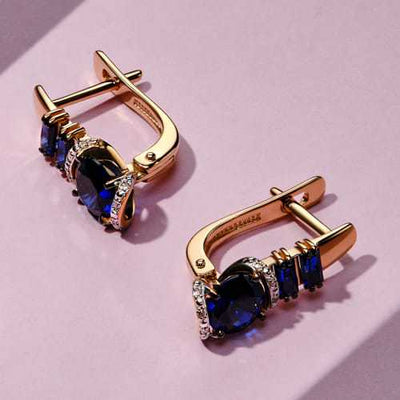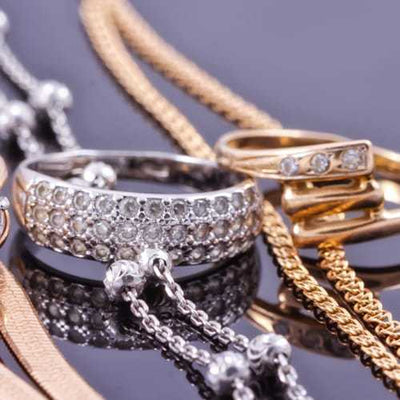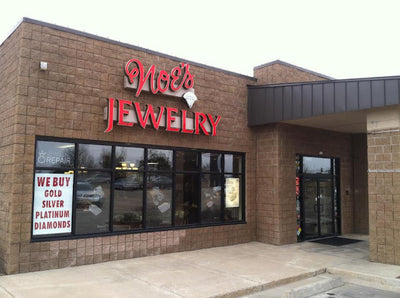The Noe's Diamond Guide
When buying a diamond, it's important to be informed. We want to make sure you know everything you need to know to purchase a diamond with confidence. So, we created this guide to answer some of the most commonly asked questions about diamonds.
The 4 Cs of Diamonds: Grading Diamond Quality
Diamond Color
Diamonds are graded based on their lack of color, with the ideal diamond being completely colorless. The alphabetical color grading scale runs from D to X and is shown on the chart below.
Once diamonds reach a dark enough shade of yellow or brown, however, they become known as “fancy colored diamonds,” which are rare and valued for their vivid hues.

Diamond Cut
It’s a common misconception, but “cut” does not refer to the shape of the diamond. Instead, it refers to a diamond’s proportions and faceting. Facets are the flat surfaces that gemcutters carve into the diamond. They create angles and planes for the light to bounce off of, giving diamonds their trademark sparkle.
Diamonds should be cut to specific proportions. It should absorb light and then reflect it back out into the world. A diamond that is cut too shallow will not absorb enough light. A diamond that is cut too deep will lose some of the light it absorbs.
A diamond’s cut can disguise its flaws, improve its color and even impact its perceived size.

Diamond Clarity
Diamonds are also judged based on clarity. This involves inspecting a diamond for any imperfections on the inside or outside of the stone. Imperfections on the surface or the stone are called blemishes, while imperfections on the inside of the stone are called inclusions.
Blemishes may include scratches, chips, pits, breaks, polish lines and light or dark spots on the diamond’s surface. Common types of inclusions are feathering (small cracks within the body of the diamond), graining (the result of irregular crystal growth), internal cavities, and bearding (which gives the diamond a blurry or fuzzy appearance).
Diamonds are assigned a clarity grade based on the following criteria.
FL-Flawless: A flawless diamond has no inclusions or blemishes visible to a skilled grader when viewed at 10x magnification. Flawless diamonds are exceptionally rare.
IF-Internally Flawless: Has no inclusions, and only has blemishes visible to a skilled grader at 10x magnification.
VVS-Very, Very Slightly Included: Have minor inclusions that are difficult for a skilled grader to see at 10x magnification.
VS-Very Slightly Included: Have minor inclusions that are somewhat easier for a skilled grader to see at 10x magnification.
S-Slightly Included: Have noticeable inclusions that are easy for a skilled grader to see at 10x magnification. Inclusions may be visible to the naked eye.
I-Included: Have obvious inclusions that can be seen with the naked eye. At this level, inclusions may affect the transparency and brilliance of the diamond.
Most of the diamonds you see in fine jewelry and engagement rings rank somewhere between VVS and S.
Diamond Carat
Carat measures the weight of a diamond. 1 carat is equivalent to 200 milligrams, or about 0.2 grams. Carats can also be divided into points, with 100 points in each carat. In that case, a 25-point diamond would be .25 carats.
Many factors can influence the perceived size of your diamond, including its shape and cut. A well cut diamond may look larger than a poorly cut diamond, even if the poorly cut diamond has a higher carat weight. And an oval diamond may look larger than a round diamond, even if both diamonds are the same carat weight.

Diamond Shapes
Diamonds can be cut into many different shapes. Popular shapes include round, cushion, princess, oval, pear, marquise and emerald, all of which you can find on the chart below.
All diamond shapes are beautiful, but each one has its own unique qualities. For instance, elongated shapes like oval and emerald have more surface area, which can make your diamond appear larger. If you’re choosing a diamond for an engagement ring, be sure to talk to one of the jewelry experts at Noe’s to find out more about the diamond shape you are interested in.

Lab Grown vs Natural Diamonds
Natural diamonds form within the earth under very specific circumstances, when carbon atoms are subjected to high heat and high pressure. It takes hundreds of millions of years for a diamond to form. In fact, the youngest diamonds today are about one billion years old. Natural diamonds are very rare, and jewelry-quality natural diamonds are even rarer.
Lab grown diamonds are man-made diamonds that are created in a laboratory environment. Scientists recreate the conditions that form natural diamonds by applying high pressure and high temperatures to diamond ‘seeds’ in sealed chambers. Unlike natural diamonds, a lab diamond forms in a matter of weeks. Lab diamonds are also created in a sterile environment, so they are less prone to natural flaws.

Lab diamonds and natural diamonds have the same physical and chemical properties. They look the same, feel the same, and share the same strength and durability. Apart from how they are formed, the main difference between lab diamonds and natural diamonds is in their cost and value.
Lab diamonds cost less because it takes far less time and labor to create them. On the other hand, natural diamonds hold their value far better than lab diamonds do. That’s because natural diamonds are a finite resource, much rarer than lab diamonds.
At Noe’s, we want to make sure you are educated on the difference between lab and natural diamonds. However, we believe the decision is entirely up to you. Please feel free to talk to us if you have any further questions!
Caring For Your Diamond Jewelry
Diamonds are the hardest naturally occurring mineral on earth, but that doesn’t mean they are indestructible. It’s still very important to take good care of your diamond jewelry. Here are a few basic tips for how to keep your diamond safe and sparkling.
Take your diamond off during certain activities.
Remove your diamond jewelry when you are:
- Gardening
- Lifting weights or working out
- Playing sports
- Swimming
- Working with tools
- Working with household chemicals
- Applying lotion, makeup, or hair products
- Sleeping

Store your diamond safely.
When you aren’t wearing your diamond jewelry, store it in a proper jewelry box. A good jewelry box should have a soft fabric interior, separators to divide your jewelry, and a lid to protect it from dust or exposure. Diamonds can be scratched by other diamonds, so keep all of your diamond pieces away from one another.
Insure your diamond.
Just like your house or your car, your diamond jewelry is a valuable investment item. You should keep it safe with an insurance policy to protect you in the unfortunate event of loss, theft or damage. Visit us here at Noe’s to find a jewelry insurance policy that works for you.




